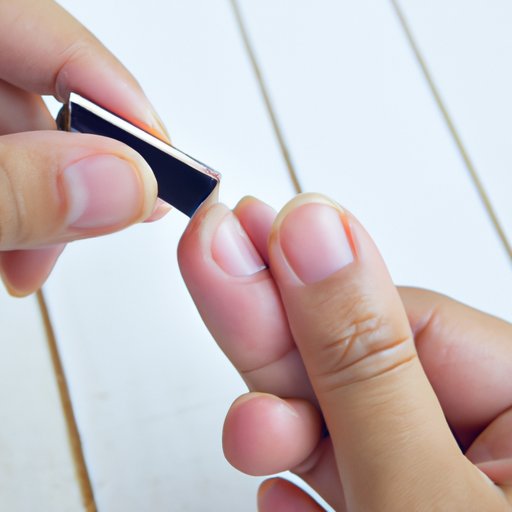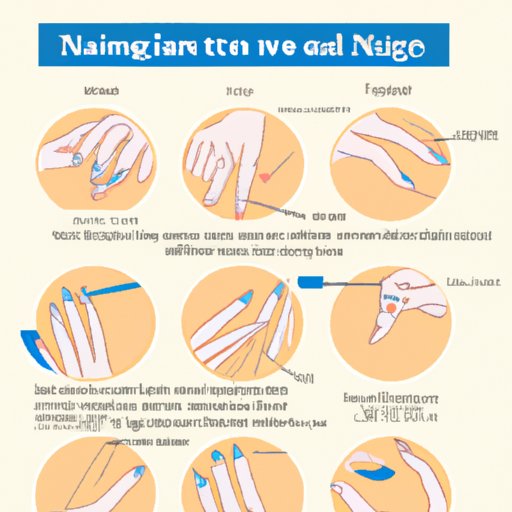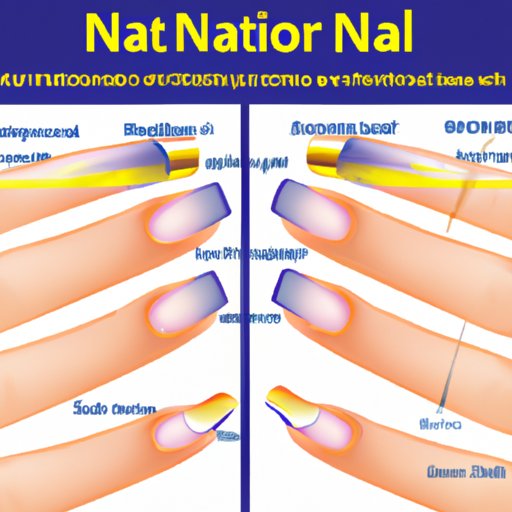Introduction
Our fingernails can tell us a lot about our health. While some changes and abnormalities may be normal, there are certain signs and symptoms that can indicate an underlying health issue. It’s important to understand what these changes mean and when to seek medical advice.
Fingernails are composed of keratin, a protein found in the skin and other parts of the body. They grow from deep within the cuticle, which is the protective layer at the base of the nail. The cuticles help protect the nails from bacteria and dirt, while the nail plate is the visible part of the nail.
Common Nail Changes and What They May Indicate
There are several common nail changes that can occur and they can often be indicative of underlying health issues. These include:
- Discoloration – this can range from yellowing to darkening of the nails, and can be caused by fungal infections, psoriasis, or even kidney disease.
- Ridges – vertical lines that run up and down the nail, usually caused by aging, injury, or a vitamin deficiency.
- Pitting – small dents on the surface of the nail, which can be caused by eczema, psoriasis, or alopecia.
- Splitting – when the nail splits into two or more layers, which can be caused by fungal infections or psoriasis.
- Thinning – when the nail becomes thin and brittle, which can be caused by an iron deficiency or thyroid problems.
It’s important to pay attention to any changes in your nails, as they can give you insight into your overall health.

How to Read Fingernails for Signs of Health Problems
When examining your nails for signs of health problems, it’s important to look for any changes in color, texture, shape, or thickness. Pay close attention to any discoloration, ridges, pits, splitting, and thinning. These changes can all be indicative of an underlying health issue.
It’s also important to pay attention to any changes in the nails themselves. For example, if the nails become thickened or curved, this could be a sign of a fungal infection. Additionally, if the nails become brittle or start to chip, this could be a sign of a vitamin deficiency or an autoimmune disorder.
Are Your Nails Telling You Something?
Your nails can be a window into your overall health, so it’s important to be aware of any changes. If you notice any of the above changes, it’s best to consult with your doctor to determine the cause. They may recommend further testing or prescribe medication to treat the underlying condition.
Additionally, it’s important to take care of your nails. Keep them clean and moisturized to prevent any infections or damage. If you notice any changes, it’s best to consult with your doctor right away to ensure that the problem is addressed quickly.

What Nail Changes Could Mean for Your Health
Nail changes can be indicative of various health issues. Some of the most common include:
- Anemia – this is a lack of red blood cells, which can cause the nails to become pale or yellowish.
- Liver disease – this can cause the nails to become yellow or brown.
- Kidney disease – this can cause the nails to become yellow or blue.
- Diabetes – this can cause the nails to become brittle or dry.
- Fungal infections – this can cause the nails to become thickened, discolored, or brittle.
If you notice any changes in your nails that are concerning, it’s best to consult with your doctor to rule out any serious conditions.

A Guide to Nail Abnormalities and What They Could Mean for Your Health
Nail abnormalities can be indicative of various health issues. Some of the most common abnormalities include:
- Clubbing – when the nail curves downwards, which can be caused by lung disease or heart failure.
- Spoon nails – when the nail curves upwards, which can be caused by iron deficiency anemia.
- Terry’s nails – when the nails are white with a dark band at the end, which can be caused by liver or kidney disease.
- Half-and-half nails – when half of the nail is white and the other half is pink or red, which can be caused by kidney disease.
- Pterygium – when the nail grows over the cuticle, which can be caused by psoriasis or eczema.
It’s important to seek medical advice if you notice any of these abnormalities, as they can be indicative of underlying health issues.
Conclusion
Our fingernails can tell us a lot about our health, from changes in color or texture to nail abnormalities. It’s important to be aware of any changes in your nails and to seek medical advice if you notice any concerning signs or symptoms. With proper care and attention, you can keep your nails healthy and strong.
Resources for further information:
